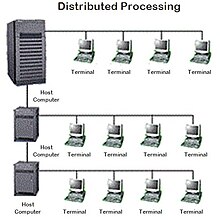Thursday, 4 April 2013
Overview Of Computer network
Hi, Thanks for coming today to read from our blog post. today we shall look at the History and Development of computer Network, So sit tight Let Go!
History
Before the advent of computer networks based on telecommunications
systems, communication between calculation machines and early computers
was performed by human users by carrying instructions between them. Many
of the social behaviors seen in today's Internet were demonstrably
present in the 19th century and arguably in even earlier networks using
visual signals.
- In September 1940, George Stibitz used a teletype to send instructions for a problem set from his Model at Dartmouth College to his Complex Number Calculator in New York and received results back by the same means.
- In the late 1950s, early networks of communicating computers included the military radar system Semi-Automatic Ground Environment (SAGE).
- In 1960, the commercial airline reservation system semi-automatic business research environment (SABRE) went online with two connected mainframes.
- In 1962, J.C.R. Licklider developed a working group he called the "Intergalactic Computer Network", a precursor to the ARPANET, at the Advanced Research Projects Agency (ARPA).
- In 1964, researchers at Dartmouth developed the Dartmouth Time Sharing System for distributed users of large computer systems. The same year, at Massachusetts Institute of Technology, a research group supported by General Electric and Bell Labs used a computer to route and manage telephone connections.
- Throughout the 1960s, Leonard Kleinrock, Paul Baran and Donald Davies independently conceptualized and developed network systems which used packets to transfer information between computers over a network.
- In 1965, Thomas Marill and Lawrence G. Roberts created the first wide area network (WAN). This was an immediate precursor to the ARPANET, of which Roberts became program manager.
- Also in 1965, the first widely used telephone switch that implemented true computer control was introduced by Western Electric.
- In 1969, the University of California at Los Angeles, the Stanford Research Institute, the University of California at Santa Barbara, and the University of Utah were connected as the beginning of the ARPANET network using 50 kbit/s circuits
- In 1972, commercial services using X.25 were deployed, and later used as an underlying infrastructure for expanding TCP/IP networks.
Today, computer networks are the core of modern communication. All modern aspects of the public switched telephone network
(PSTN) are computer-controlled. Telephony increasingly runs over the
Internet Protocol, although not necessarily the public Internet. The
scope of communication has increased significantly in the past decade.
This boom in communications would not have been possible without the
progressively advancing computer network. Computer networks, and the
technologies that make communication between networked computers
possible, continue to drive computer hardware, software, and peripherals
industries. The expansion of related industries is mirrored by growth
in the numbers and types of people using networks, from the researcher
to the home user.
An interconnected collection of autonomous computers (unique identity) is known as a computer network Knowledge is power and I am here to
give out the best I can. Feel free to contact mewith any question you may have as a result of this post or any other thing. Share this article with friend, on facebook, Twitter, or live a comment below. If you want to know me click HERE.
Knowledge is power and I am here to
give out the best I can. Feel free to contact mewith any question you may have as a result of this post or any other thing. Share this article with friend, on facebook, Twitter, or live a comment below. If you want to know me click HERE.
more tips and tutorialPlease to get related Tutorial on this subject click Here.
more contact info
Mobile No +2348136367446
or
mail us
@worldbasecommunicationtech@gmail.com
or onyemashedrach9@gmail.com
or onyema.shedrach@yahoo.com
or add me on facebook with
http://www.facebook.com/onyema.shedrach
you can use the share button below to share this article in any social network
Subscribe to:
Post Comments
(
Atom
)





No comments :
Post a Comment
Please Send Us your comment below!